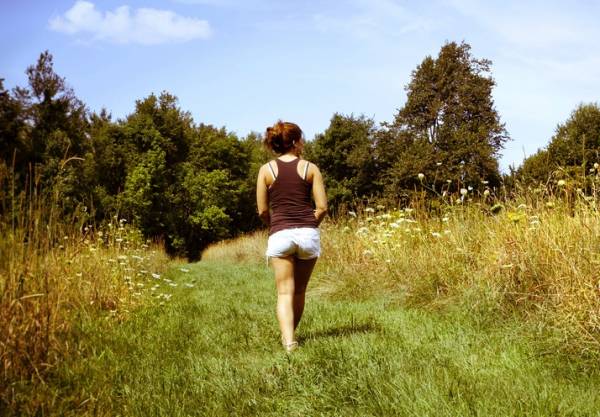We are hard-wired to be really bad at meditation. Thousands of years of evolution have ensured that the humans with the most active brains – those in constant assessment of the world around them, potential threats, analysis of past events, and concern for future well-being – are those who survived when survival was questionable.
We are all descendants of really bad meditators. Add to this the general level of distraction we face each moment, and you have a recipe for a tough time sitting in stillness. This is either good news or bad news, depending on how you look at it.
Bad news, we catch only limited moments of success; good news, simply trying to meditate brings about the benefits, whether or not we ever calm down the default circuitry of the brain. But for those of us who just meet frustration every time we come to the cushion, one option is a walking meditation.
About Walking Meditation
The goal of any mediation is to be present in the body’s experience of a given moment. Therefore, even in walking meditation, it is best to choose a space with limited distractions, turn off your telephone, walk alone, and choose a path that is not too challenging.
Being in nature is best, as this increases overall happiness with the process. This is not an opportunity to “tune out” through distracting yourself with physical movement. Rather, think of walking meditation as a way to increase awareness of the body’s sensations and the mind’s work to process those sensations.

Instructions
- Creating habits leads to greater success. Decide on a time each day for your walking meditation. After a meal is a great choice as walking provides good posture for digestion.
- Do your best to make sure you are free of distractions. Leave behind your telephone, or at least turn it off. Choose a path you know well so you can concentrate on the experience you are having. Labyrinths and meditation gardens are also a great option, as the walking is confined to a specific experience of the path and therefore limits sensory data.
- Before you begin walking, take a moment to feel your body. Feel the quality of your breath. Take a mental scan of your body, and notice any areas that are calling for your attention. Just observe without feeling the need to act accordingly.
- Start walking. Settle on a slow pace that allows you to coordinate breath with your movement.
- As you walk, be keenly aware of what your senses are taking in. Notice smells, sounds, the feel of the air on your skin, grades in the terrain, and how your breath varies based on these experiences. Continually witness the body’s response to the changes around it.
- Do your best to not allow your thinking brain to go into processing mode. A tip: try to take language out of the equation by thinking in feelings rather than words. For example, rather than hearing a sound and mentally saying, “That is a bird,” just witness what it is like to hear the sound. Try to feel the part of your ear that perceives that particular sound, or feel the sound as vibration in your body.
- Walk for ten minutes to an hour. At times during your walk, you will catch yourself wrapped up in thought. Use your senses to tune back in to the experience around you.

Is This Really Meditation?
I cannot say for certain whether walking meditation meets the full criteria for meditation in the yogic sense. My teacher is notorious for saying, “It is only when the body is still that the mind can fully relax.” Ultimately, I think we can more profoundly and deeply experience the moment when we are still. We learn to attune to smaller sensations, and we have an easier time catching the brain on its way to default mode.
However, I believe our brain’s hardware limits many of us from having truly deep experiences in seated meditation. Eventually, you may move to an alternating meditation, spending thirty minutes walking then thirty minutes sitting. In the end, I believe any act of mindfulness is better than no mindfulness at all. If walking meditation gets you to meditate, I’m all for it.
Happy walking, everyone, and please share comments, experiences, and questions below.
Photos courtesy of Shutterstock.






